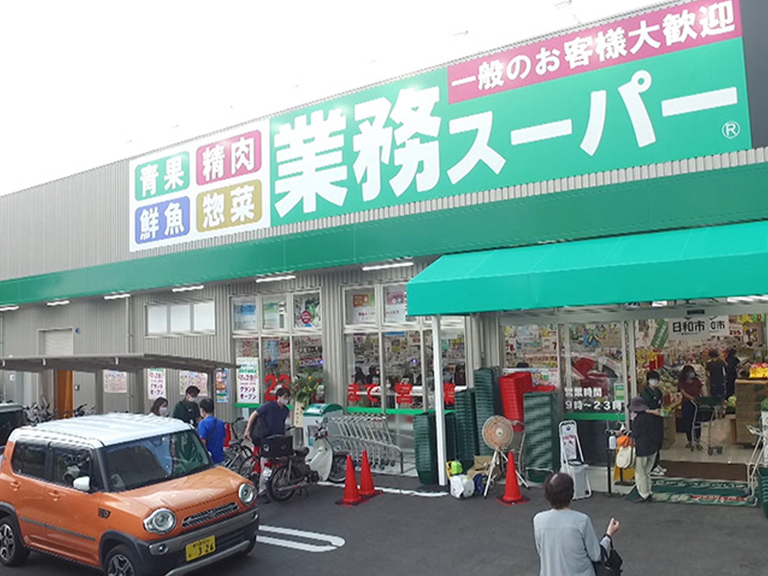Products of Gyomu Super are defined by “Low Price But Unique” and primarily consist of three categories:
1. Frozen Foods
2. Private Brand (Own Brand)
3. Imported Foods
Gyomu Super operates a total of 5,590 SKUs, with frozen foods accounting for 50%, shelf-stable foods for 30%, and refrigerated foods for 20%. Frozen foods are considered a strategic category for the channel due to its relative independence from physical space constraints, facilitating large-scale production and lower prices. The frozen foods mainly include 500g and 1kg bulk packaging, featuring lightly processed foods such as chicken, beef, vegetables, and fruits. For example, 1kg of chicken wings is priced at approximately 640 yen or 32 Chinese yuan.

This product combination targets an often overlooked demographic: low to middle-income households with multiple members. As the number of single individuals increases and households become smaller in size, the packaging of pre-made frozen foods in Japan has gradually become smaller and more prefabricated. However, these innovations have also increased product prices, making it challenging to meet the needs of many low to middle-income, larger households who have a stronger demand for convenience.

Private brand product
Premade potato salad 399 yen per kilo
Most of these frozen food items are part of Gyomu Super’s private brand, sourced not through OEM but primarily from food factories acquired by Kobe Bussan. Kobe Bussan currently owns 25 private food factories producing 370 SKUs, accounting for 11% of the total revenue.
In the ever-changing competitive landscape, frozen foods can easily become entangled in price wars. However, consumers not only seek affordability but also crave freshness through channel-specific (unique) products. To address this, Kobe Bussan introduced food sourced directly from overseas through its trading company, bypassing import distributors. The supermarket actively seeks products from foreign brands, imports them to Japan, and sells them at lower prices. Gyomu Super has a turnover speed far higher than that of import food supermarkets, avoiding unsold inventory due to the expiration of imported food, which accounts for 24% of the total revenue.
The success of the imported food business is credited to Kobe Bussan’s second president, Hirokazu Numata. He once stated, “Every time I go to food exhibitions overseas, it feels exceptionally fresh. I hope to bring that sense of happiness to Japanese consumers.” Since his tenure, Kobe Bussan continuously introduces new products, increasing the proportion of imported foods.
The formation of a vertical supply chain has granted the company the ability to achieve low prices, while the combination of imported products has made it a unique channel. Even in deflationary times, consumers, while seeking affordability, also wish to improve their quality of life. Imported new products, coupled with media exposure, often become popular topics, making them more attractive to consumers. Examples include frozen macarons, waffles, milk tea, cream pies, among others.

Following the “Low Price But Unique” philosophy, the company successively launched popular desserts such as cheesecake in tofu packaging and one-liter containers of yokan (sweet red bean jelly). These products have become table desserts for many households, giving rise to a unique way of enjoying Kobe Bussan products—such as combining their own-brand bread with custard pudding to create French toast.
As the proportion of own-brand products continues to rise, Kobe Bussan’s profit margin has significantly increased. Emphasizing the importance of product development within the framework of the EDLP model, founder Shoji Numata once highlighted, “Since Gyomu Super follows the EDLP policy, offering the same low prices every day, if some specific products do not sell, the store’s sales will correspondingly decline. There is no advertising, no daily specials— we have nothing. We simply hope customers make a purchase, are satisfied, and return for more.”



















